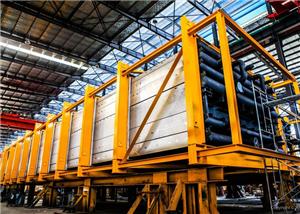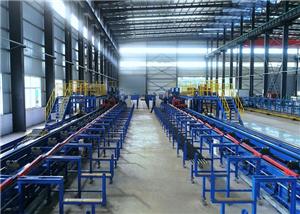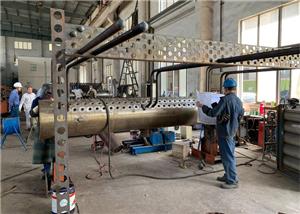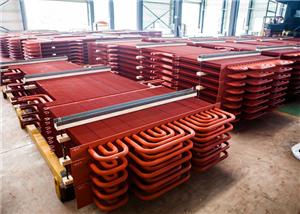-
1.What Are the Types of Waste Heat Recovered from a Waste Heat Boiler
The principle of waste heat boiler is that the fuel oil, gas and coal are burned to produce the heat emission of high-temperature flue gas. The high-temperature flue gas first enters the furnace chamber, then enters the waste heat recovery device of the front smoke box, then enters the pyrotechnics pipe, and finally enters the waste heat recovery device of the flue pipe of the back smoke box. The high-temperature flue gas turns into low-temperature flue gas and is discharged into the atmosphere through the stack. 1. High temperature flue gas waste heat: it is a common form, its characteristics are large output, concentrated production point, strong continuity, easy to recover and use, heat absorb accounted for 40~50% of the total heat, the waste heat boiler recovery heat, can be used in production or daily life heat and power generation. 2. Residual heat from high temperature furnace slag, 3. High temperature product waste heat: such as steel billet, high temperature forging part etc, 4. The residual heat of combustible waste gas and liquid waste, 5. Residual heat of chemical reaction, 6. Residual heat of cooling medium, 7. Waste heat from condensation water.
-
2.Why do HRSGs Use Finned Tubes?
The reason why finned tubes are used in HRSG: to improve the efficiency of waste heat boilers, the temperature difference between smoke temperature and boiler steam temperature must be reduced. There are area, resistance and temperature difference contradictions. The heating area of waste heat boiler will be increased. In order to reduce the flow resistance loss, the flow area can be increased and the flow speed can be reduced. However, the low speed flow is bound to reduce the heat transfer efficiency; So as to increase the heat transfer area; In turn, the area of the HRSG will increase to infinity; The use of spiral finned tube can ensure enough heat transfer area, enhance heat transfer, and can reduce the flue gas resistance!
-
3.Boiler Tips
1. The drum is connected by a riser and a downcomer to form a natural circulation loop.Upper drum is filled with water and steam mixture from circulation loop,normally there will be water steam seperating device and feeding water distribution pipe.In order to improve the quality of boiler water some boilers are also equipped with continuous sewage pipe and dosing pipe. There is a regular sewage discharge device in the lower drum. On the outer wall of the upper boiler drum of steam boiler, there are also flanged short pipes connecting the main steam pipe and the secondary steam pipe and flanges and short pipes connecting the continuous water level gauge, pressure gauge, safety valve and other accessories. There is a regular blowdown device for discharging sediment in the lower boiler drum. 2. For larger capacity boilers, simply using natural separation of steam and water can no longer meet the requirements, need to install a seperating device inside upper drum. 3. The water-cooled wall tube is usually a no.10 or no.20 seamless steel tube with an outer diameter of 51~76mm and a wall thickness of 3.5~6.0mm. The distance between the center of the tube is generally 1.25~2 times of the outer diameter of the tube.Both finned tubes and bare tubes. 4. Water - cooled walls are generally fixed on the upper, the lower can be free expansion. 5. The function of steam superheater is to heat the saturated steam drawn out of the upper drum to a certain temperature of the superheated steam. Industrial steam is mostly saturated steam, so normally general boiler are not equipped with steam superheater. A steam superheater is installed in the boiler only if the production steam requires a higher temperature and does not require an increase in steam pressure, or if superheated steam is required in order to reduce condensation losses during steam transmission. In industrial boilers, the temperature of superheated steam is 250℃ and 350℃ for the boilers with working pressure of 1.25MPa, and 350℃ for the boilers with working pressure of 1.6MPa.
-
4.Basic Knowledge of Boilers
Boiler refers to the equipements that using heat energy released by fuel combustion or other heat energy to heat water or other working medium so as to produce steam or hot water with specified parameters (temperature, pressure) and quality. Classification of boilers: Application: Power Plant Boiler, industrial boiler Steam: supercritical pressure boiler, subcritical pressure boiler, superhigh pressure boiler, high pressure boiler, medium pressure boiler, low pressure boiler. Evaporation capacity: Large scale, medium size, small size. Medium: steam boiler, hot water boiler, organic heat carrier boiler Heat source: coal-fired boiler, oil-fired boiler, gas-fired boiler, waste heat boiler, electric boiler. Structure: Shell boiler, water tube boiler.




